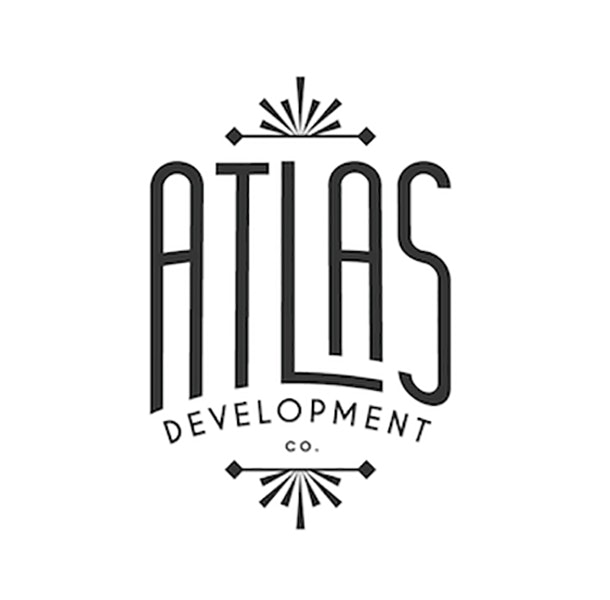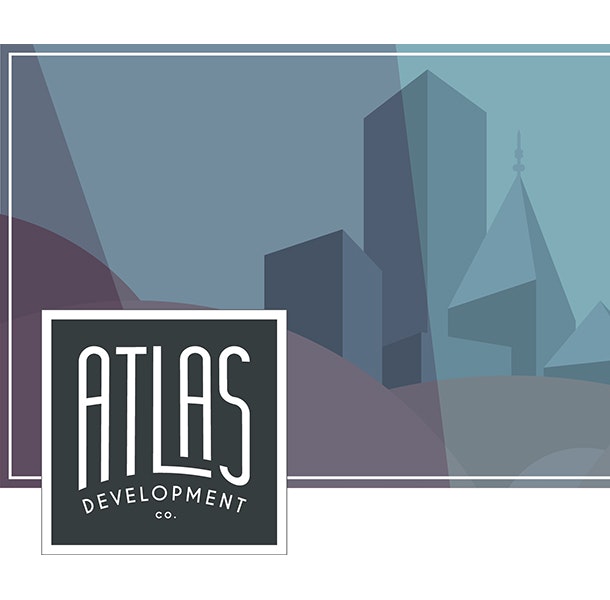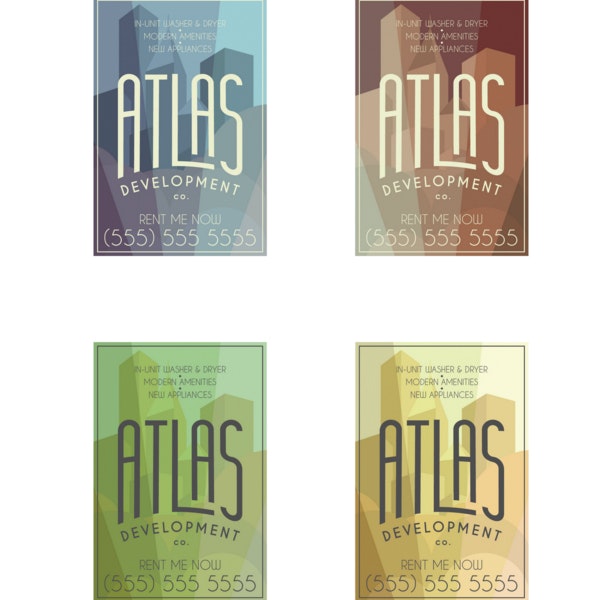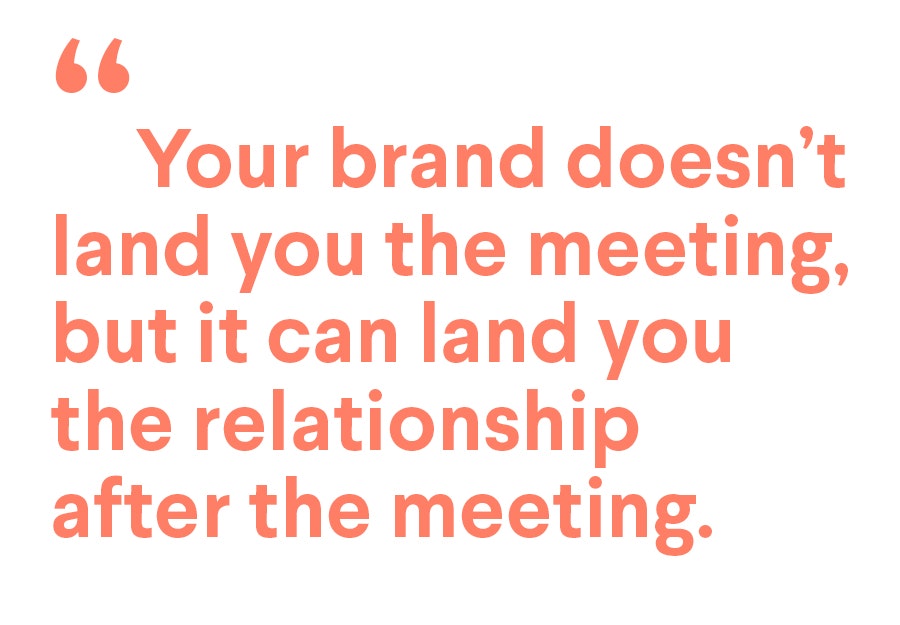





















Based on exit polls:government and not coal miners!
Just take a look at the attached. Study it for awhile and you start to see the enormity of our country and the programs it funds. http://www.usdebtclock.org/# -
and, a repeat:
This is a great message for all Americans.
++++++++++++++++++++++++++++++++++++++++++++++++++++++++++++++++++++++++and, a repeat:
This is a great message for all Americans.
More copy on Daniel's development team:
It takes a city: How a well-rounded team of experts helped a small development company revitalize Pittsburgh
Daniel Berkowitz, founder and managing partner of real estate development company Atlas
Daniel and the rest of the team at Atlas have taken on the superhero-sized task of
revitalizing the greater Pittsburgh area. In less than a year since its inception, Atlas has
made major strides toward transforming the city into an entrepreneurial hub, thanks in large
part to the diversity of their team and communal commitment to tackling their mission one
step at a time.

Superman’s posse
Atlas Development isn’t your typical real estate development company.
Rather than buying buildings for the purpose of attracting wealthy new
tenants, Atlas works with the existing tenants to make neighborhoods
great for the people who live there now. Daniel considers Atlas a
vehicle to facilitate things that people are great at doing; to help a
neighborhood become a better “them” and a building become a better
“it.” And as the old adage goes, “It takes a city,” which is why Daniel’s
recruited a reliable and diverse team of partners with different roles
and responsibilities to help achieve these goals.
As a founder you have to recognize you can’t do everything. I’d rather
own 10% of watermelon than 100% of a grape.”-Daniel Berkowitz
Daniel’s approach to team-building was to assess the needs of his
company and then find people who could fit those roles. Since Daniel
didn’t know much about designing and planning buildings, finding an
urban planning architect was crucial for Atlas’growth, as well as a
financial advisor to help with raising andmanaging capital. By
delegating these roles, Daniel was able to focus his attention on team
management and day-to-day operations.
By the people, for the people
—
The masterminds behind Atlas agreed wholeheartedly that the
most important factor for success would be delivering their promise
of revitalizing Pittsburgh. And as manager, it was Daniel’s job to
make sure his team stayed true to this mission. Daniel found the
best way to do this was to maintain and strengthen the group
mentality.
Managing a small company with a big
mission? Strengthen your unit with Daniel’s
proven tips:
Don’t over-promise. Over-promising creates negative pressure
on your team, whereas if you promise what you can deliver it
creates momentum. Atlas started with a goal of revitalizing a few
buildings, a manageable project for a small team. Once they had
enough resources they tacked on a few more projects that were
achievable.
Remain disciplined.
Even in the rocky beginnings of a company,it’s important to remain
focused on your core business rather than looking at other avenues
of income. Daniel admits when Atlas ran out of cash in its first few
months (a situation that is commonplace for many startups),
he was tempted to ditch the company and try other ways of making
money in the short term. However, by remaining focused on Atlas’
growth Daniel was able to pinpoint the resources Atlas needed to
succeed and make it happen, as well as prove to his team that he
believed they could do it.
However, by remaining focused on Atlas’ growth Daniel was able
to pinpoint the resources Atlas needed to succeed and make it
happen, as well as prove to his team that he believed they could do it.
Capitalize on your strengths.
Acknowledge what your team is capable of and hone in on that.
Daniel recruited a team of diverse experts from various backgrounds
so that he could delegate tasks and achieve more than if he had a
homogenous team of only real estate-focused minds.
Learn from those around you.
In addition to recruiting partners to fill out gaps in his skillset, Daniel
also spoke with local developers who have led similar projects to
learn the best and worst strategies for success in real estate. He
admits although he didn’t necessarily like all of the other developers’
work or want to emulate it step-for-step, it was immensely beneficial
to observe what made other projects successful and learn how he
can apply that learning to Atlas’ goals.
Donning a cape (and logo, and
website…)
—
With a reliable team in place ready to tackle a big mission, the one
task left for Atlas was getting fully ‘fitted—because what kind of
superhero doesn’t have a snazzy cape to announce that they’ve
arrived?!
After being quoted for upward of $17,000 for a brand identity from
local designers, Atlas turned to 99 designs to give their company a
face at a price they could afford. “We needed a brand identity that
would be catchy at a business card scale, but also at large scale on
a banner hanging on the side of a building,” says Daniel. It was only
two days before they found a winner in their brand identity contest.
Platinum designer No. 6 brought to life the art deco aesthetic Atlas
envisioned for their super-startup.



Daniel’s pro tip: Wait a few months before you brand!
Many business owners rush into choosing a logo and brand identity
and consequently wind up wasting thousands of dollars. Daniel
recommends giving your business some time to develop before you
choose an identity. This way, you have time to test your product and
build a brand that is based off of experience and knowledge rather
than what looks cool.

Up, up, and away!
—
Now that they have the team, the mission, and the look, Atlas is
ready to transform Pittsburgh from its rust belt past to its young,
modern, vibrant and entrepreneurial future.
Within the next year, the Atlas team plans to finish up the eleven
projects they are currently developing, while simultaneously buying
their next buildings so they can immediately move on to the next
project. Daniel and the Atlas team are also looking toward more
long-term revitalization projects that expand past Pittsburgh’s
borders to other underdeveloped cities, with Baltimore and St.
Louis on the horizon. “We want to be known as the group able to
do that, while always avoiding gentrifying a city. We don’t want to
rip the soul of the city, we just want to turn up the volume!” says
Daniel.
And Daniel’s last piece of advice? “Come to Pittsburgh! It’s the
most amazing city.” Atlas, over and out!
In the next few days Trump is meeting with Ryan and the
Republican Establishment and a variety of other politicos.
we will learn a great deal about his abilities.
Time will tell.
===
Finally something not political but it has political ramifications. (See 1 below.)
During our drive from Montgomery to Charlottesville, Daniel and I explored the impact of
driver-less cars from a societal standpoint as well as an economic one.
There will be significant shifts in employments, eventually less cars being manufactured
and with less parts. This will impact air travel, particularly shorter distance air travel,
motels and other lodging, police departments and eventually the replacement of driving
licenses by some other form of identification, insurance rates and personal injuries as well
as the medical and legal profession etc.
===
America's military has shrunk to a level it can no longer defend our national interests .
(See 2 below.)
===
Black lies matter! (See 3 and 3a below.)
====
London goes the way of all Islam? (See 4 below.)
===
Dick
+++++++++++++++++++++++++++++++++++++++++++++++++++++++++++++++++++++++
1)IN 1998, KODAK HAD 170,000 EMPLOYEES AND SOLD 85% OF ALL
PHOTO PAPER WORLDWIDE.
Within just a few years, their business model disappeared and they went
bankrupt.
What happened to Kodak will happen in a lot of industries in the next 10
years - and most people don't see it coming.
Did you think in 1998 that 3 years later you would never take pictures on
paper film again?
Yet digital cameras were invented in 1975.
The first ones only had 10,000 pixels, but followed Moore's law.
So as with all exponential technologies, it was a disappointment for a long
time, before it became way superior and got mainstream in only a few
short years.
It will now happen with Artificial Intelligence, health, autonomous and
electric cars, education, 3D printing, agriculture and jobs.
WELCOME TO THE 4TH INDUSTRIAL REVOLUTION.
Welcome to the Exponential Age.
Software will disrupt most traditional industries in the next 5-10 years.
Uber is just a software tool, they don't own any cars, and are now the
biggest taxi company in the world.
Airbnb is now the biggest hotel company in the world, although they don't
own any properties.
Artificial Intelligence: Computers become exponentially better in
understanding the world.
This year, a computer beat the best Go player in the world, 10 years earlier
than expected.
In the US, young lawyers already don't get jobs.
Because of IBM Watson, you can get legal advice (so far for more or less
basic stuff) within seconds, with 90% accuracy compared with 70%
accuracy when done by humans.
SO IF YOU STUDY LAW, STOP IMMEDIATELY.
There will be 90% less lawyers in the future, only specialists will remain.
Watson already helps nurses diagnosing cancer, 4 times more accurate
than human nurses.
Facebook now has a pattern recognition software that can recognize
faces better than humans.
In 2030, computers will become more intelligent than humans.
Autonomous cars: In 2018 the first self-driving cars will appear for the
public.
Around 2020, the complete industry will start to be disrupted.
You don't want to own a car anymore.
You will call a car with your phone, it will show up at your location and
drive you to your destination.
You will not need to park it, you only pay for the driven distance and can
be productive while driving.
Our kids will never get a driver's license and will never own a car.
It will change the cities, because we will need 90-95% less cars for that.
We can transform former parking space into parks. 1.2 million people die
each year in car accidents worldwide.
We now have one accident every 100,000 km, with autonomous driving
that will drop to one accident in 10 million km.
That will save a million lives each year.
Most car companies might become bankrupt.
Traditional car companies try the evolutionary approach and just build a
better car, while tech companies (Tesla, Apple, Google) will do the
revolutionary approach and build a computer on wheels.
I spoke to a lot of engineers from Volkswagen and Audi; they are
completely terrified of Tesla.
Insurance companies will have massive trouble because without accidents
, the insurance will become 100x cheaper.
Their car insurance business model will disappear.
REAL ESTATE WILL CHANGE.
Because if you can work while you commute, people will move further
away to live in a more beautiful neighborhood.
Electric cars will become mainstream until 2020.
Cities will be less noisy because all cars will run on electric.
Electricity will become incredibly cheap and clean: Solar production has
been on an exponential curve for 30 years, but you can only now see the
impact.
Last year, more solar energy was installed worldwide than fossil.
The price for solar will drop so much that all coal companies will be out of
business by 2025.
WATER:
With cheap electricity comes cheap and abundant water.
Desalination now only needs 2kWh per cubic meter.
We don't have scarce water in most places, we only have scarce drinking
water.
Imagine what will be possible if anyone can have as much clean water as
he wants, for nearly no cost.
HEALTH:
The Tricorder X price will be announced this year.
There will be companies who will build a medical device (called the
"Tricorder" from Star Trek) that works with your phone, which takes your
retina scan, you blood sample and you breath into it. It then analyses 54
biomarkers that will identify nearly any disease.
It will be cheap, so in a few years everyone on this planet will have access
to world class medicine, nearly for free.
3D PRINTING: The price of the cheapest 3D printer came down from
$18,000$ to $400 within 10 years.
In the same time, it became 100 times faster.
All major shoe companies started 3D printing shoes.
Spare airplane parts are already 3D printed in remote airports.
The space station now has a printer that eliminates the need for the large
amount of spare parts they used to have in the past.
At the end of this year, new smartphones will have 3D scanning
possibilities.
You can then 3D scan your feet and print your perfect shoe at home.
In China, they already 3D printed a complete 6-story office building.
By 2027, 10% of everything that's being produced will be 3D printed.
BUSINESS OPPORTUNITIES:
If you think of a niche you want to go in, ask yourself: "in the future,
do you think we will have that?" and if the answer
is yes, how can you make that happen sooner?
If it doesn't work with your phone, forget the idea.
And any idea designed for success in the 20th century is doomed in to
failure in the 21st century.
WORK:
70-80% of jobs will disappear in the next 20 years.
There will be a lot of new jobs, but it is not clear if there will be enough
new jobs in such a small time.
AGRICULTURE:
There will be a 100$ agricultural robot in the future.
Farmers in 3rd world countries can then become managers of their field
Farmers in 3rd world countries can then become managers of their field
instead of working all days on their fields.
Aeroponics will need much less water.
The first petri dish produced veal is now available and will be cheaper
than cow produced veal in 2018.
Right now, 30% of all agricultural surfaces is used for cows.
Imagine if we don't need that space anymore.
There are several startups who will bring insect protein to the market
shortly.
It contains more protein than meat.
It will be labeled as "alternative protein source" (because most people still
reject the idea of eating insects).
There is an app called "moodies" which can already tell in which mood
you are.
Until 2020 there will be apps that can tell by your facial expressions if you
are lying.
Imagine a political debate where it's being displayed when they are telling
the truth and when not.
Bitcoin will become mainstream this year and might even become the
default reserve currency.
LONGEVITY:
Right now, the average life span increases by 3 months per
year.
Four years ago, the life span used to be 79 years, now it's 80 years.
The increase itself is increasing and by 2036, there will be more than one
year increase per year.
So we all might live for a long long time, probably way more than 100.
EDUCATION:
The cheapest smartphones are already at 10$ in Africa and
Asia.
Until 2020, 70% of all humans will own a smartphone.
That means, everyone has the same access to world class education.
Every child can use Khan academy for everything a child learns at school
in First World countries.
We have already released our software in Indonesia and will release it in
Arabic, Suaheli and Chinese this Summer, because I see an enormous
potential.
We will give the English app for free, so that children in Africa can become fluent in English within half a year.......
++++++++++++++++++++++++++++++++++++++++++++++++++++++++++++++
2)Army shrinks to smallest level since
before World War II
Jim Tice, Army Times
In March, the Army's end strength dropped to a low not seen since before WWII.(Photo: Army)
The Army’s latest headcount shows that nearly 2,600 soldiers departed active service in March without being
replaced, an action that plunges manning to its lowest level since before World War II.
During the past year the size of the active force has been reduced by 16,548 soldiers, the rough equivalent of
three brigades.
Endstrength for March was 479,172 soldiers, which is 154 fewer troopers than were on active duty when the
Army halted the post-Cold War drawdown in 1999 with 479,424 soldiers, the smallest force since 1940, when
the active component numbered 269,023 soldiers.
Barring unexpected delays, the Army is well-positioned to achieve, or exceed, its budgeted end-strength of
475,000 soldiers by Sept. 30, the end of fiscal 2016.
Without congressional or Defense Department intervention, the draw down will continue for two more years,
with end strength hitting 460,000 soldiers in 2017, and 450,000 in 2018.
The latest official demographics from the Defense Manpower Data Center shows that in addition to the 479,172
soldiers who were on active duty April 1, the Army’s reserve forces totaled 548,024 soldiers, for a total force of
1,027,196 soldiers.
The draw down master plan calls for a Total Army of 980,000 soldiers on Sept. 30, 2018.
DMDC statistics show that 348,463 soldiers were in service with the Army National Guard on April 1, and
199,561 with the Army Reserve.
The active component total for the end of March includes 4,321 West Point cadets, which is 32 fewer than in
February and 45 fewer than in January.
The number of women serving on active duty April 1 stood at 69,171, a total that includes 15,654 officers,
52,698 enlisted soldiers and 819 West Point cadets.
The female population of the Regular Army was reduced by 340 members in March.
+++++++++++++++++++++++++++++++++++++++++++++++++++++++++++++++++++++++++
3)
Iran Deal Lies Have
Consequences
by: AAN Staff


No comments:
Post a Comment